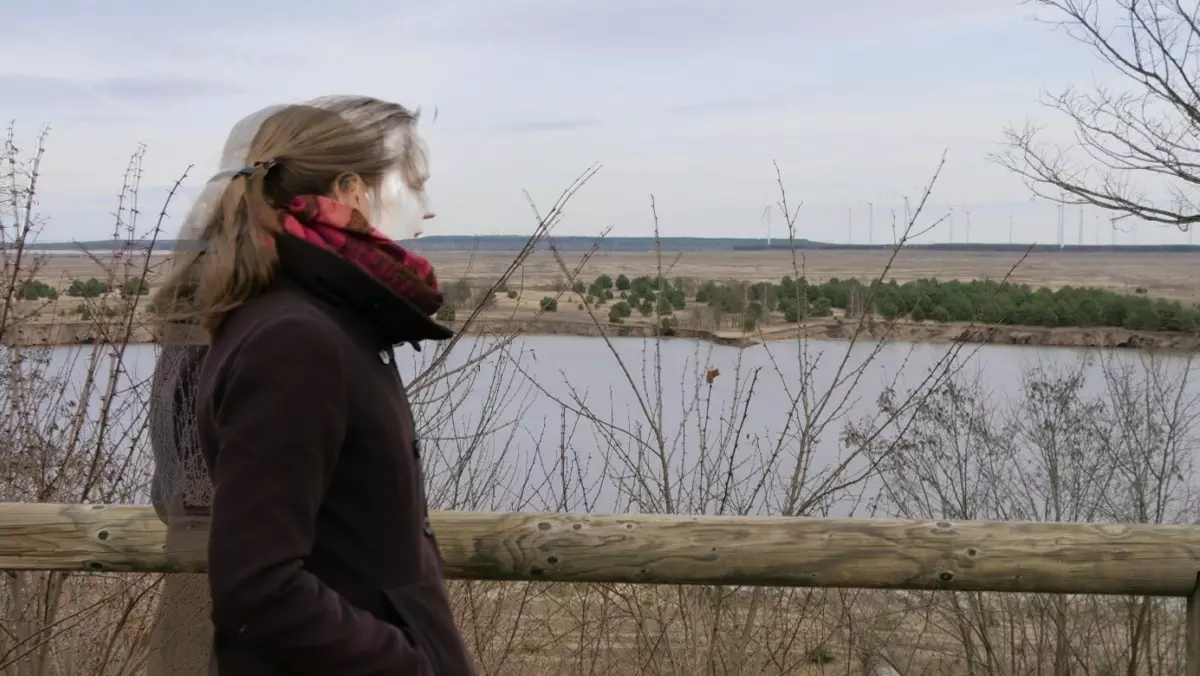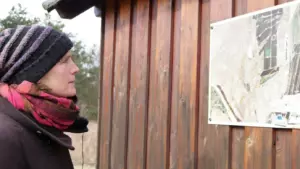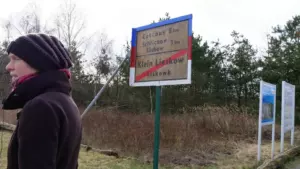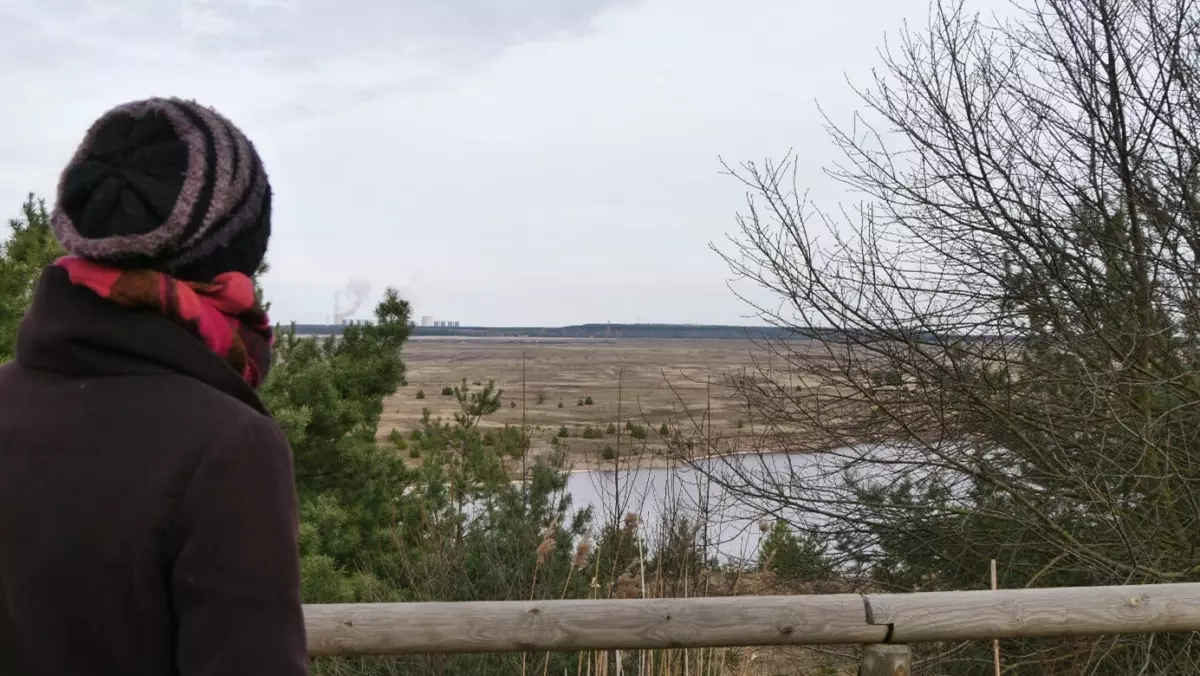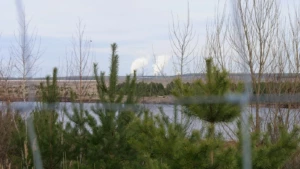
Dancing on the Edge: Beyond Cottbus and into the rural areas of structural change - a portrait of the Cottbus choreographer Golde Grunske
»Golde Grunske is a creative dancer and choreographer who develops the art of dance in unconventional arenas. Her choreographies touch on themes of uprooting, escape and the search for home. Through dance and art, she brings new experiences and encounters with culture to rural areas. Her performances in unusual places such as industrial halls or market squares are refreshing and inspiring for the audience. Join Golde on a dance journey that takes you beyond the usual.«
About Golde Grunske
- born and raised in 1975 in Leipzig
- graduate degree as librarian for scientific libraries from the Humboldt University Berlin in 1999
Artistic milestones:
- 1999 to 2003 she completed a dance education as a stage dancer at the "Etage – Schule für die Darstellenden Künste e.V." in Berlin
- since 2003 she works as a freelance dancer and choreographer in Cottbus and teaches creative children's dance, modern dance, and contemporary dance for young people and adults
- 2006 to 2008 completed postgraduate studies at the "Palucca-Schule Dresden – Hochschule für Tanz" with a degree as choreographer
- 2011 awarded the peace prize "Friedenstaube Frere Roger" for the performance of „Schocktherapie“ in Dresden
- Awarded the Brandenburg Art Promotion Prize 2013 for performing arts
- since 2015 choreographer for performances in public spaces e.g., "In Zeiten wie diesen…", 2020 "Zur Eingewöhung: Einzelhaft!", 2021 con.takt.los
Enthusiasm for the invisible
Golde and I drive together in her Mercedes Sprinter to the open pit mine to let ourselves drift there. To allow ourselves to fall into the landscape and any encounters we may find on site. "Dérive" is the name given to this method of questioning progress. This makes it possible to treat the found landscape not as a given structure, but rather as a space full of affects. A method that is also used tin qualitative research in ethnographic fields. This day is a day full of affects. A special day, not only because the topics we will discuss are home and flight, the feeling of security and what culture actually is. But also a day steeped in history, February 24, 2022, the day on which the Russian invation of Ukraine took place.
I met Golde personally almost exactly three years ago with the intention of realizing a joint dance project for children and young people. Our first personal conversation took place in her studio space at Tanzwerkstatt in Cottbus, and our current conversation aims to find out what dance actually has in common with open-cast mining and the ongoing structural change in Lusatia.
Golde is not from Lusatia, but grew up in Leipzig. Her artistic milestones led her via Berlin stages and studio spaces to Cottbus in 2003, together with her husband and children. She says that she "didn't really understand Lusatia as Lusatia" when she arrived in Cottbus, and that it was her wish to be able to understand this Lusatia as a new home as well. The subject of uprooting has preoccupied her since her youth, and the ensuing questions of loss of home and flight have also been made the subject of her choreographies since 2015.
"Only once was I rendered speechless. That was when someone asked me, who are you?" (Khalil Gibran)
The first thing we do is drift through the small village of Schlichow. It lies on the former open-cast mining edge of Cottbus-Nord and is about five kilometers from the city center. The Schlichower Dorfstrasse leads us first to the noise protection dam and thus to the so-called Schlichower "Baltic Sea View". On this morning, sun and wind emphasize the wide view into the lunar landscape of the former open pit mind up to the still active "cannon pipes" of the Jänschwalde open pit mine.
Upon reaching the top of the dam, Golde immediately begins to talk about the research work she did in 2015. How she and her ensemble climbed into the open pit to get sand and coal out, the material that was later used in the play "Ankommen". She admits that this climbing action was a little bit illegal. Nevertheless, generating material for the performance had the highest priority.
The performances of the dance company Golde G. do not take place at conventional stage locations. Instead, people are confronted with art and dance on site, preferably even on their own doorstep. In museums, industrial halls, on market squares or even in the old village pub, spectators are to be inspired, piqued, excited and carried away by the performances.
Even before the official decision to phase out coal in 2018, structural change was a fundamental theme in Golde's work. Among other things, her company performed for those affected by the relocation of the small village of Horno in the "new" Hornoer Dorfkrug. The local people reacted with emotion. A great wave of gratitude reached the artists, because dancing, whether actively performing or passively watching, hits the soul. "And you can't compensate for the soul itself," Golde states.
Where can you find a sense of home?
Looking at the edge of the bank, she wonders what kind of noise it must have been for the residents and what they had to endure for many years. And now there is this apparent idyll. Her gaze wanders into the distance over the vanished places that the coal excavators ate up. "The homeland loss story. Where do you start? Where do you stop? The breaking up of the earth. Taking what away? Taking something away and it's not coming back. It's really gone," is how Golde describes it. What preoccupied her a lot in the research at the time was, above all, the question of what happens if you can never visit your home again. A big emotional factor, because it's not just Gundermann who associates "home" in his open-pit songs with a sense of security and retreat, recreation, memories and sensations, feelings and smells, ties to people, but also Golde hand her work processes - all the way to the question: What does home mean to her personally? Golde also took up this question of identity four years later in the piece "In Zeiten wie diesen" ("In times like these"). During the interview and research processes, she became aware that the statements and perceptions of refugees and displaced persons are essentially the same, regardless of where they were uprooted from and driven to. They are all searching and want to arrive. A very deep topic, which also leads to discord.
Memorial site for Klein Lieskow and home dredged away. (© Claudia Arndt)
Working in the "areas"
That's why Golde is keen to bring dance, combined with a culture of remembrance, to everyday stages in rural areas. Art and culture can be found in abundance in urban areas, especially when it comes to high culture. Rural areas, which have often been declared provincial, are now being increasingly appreciated. The so-called "rural exodus", i.e., "out of the city, into the countryside", has not only become attractive, but exceedingly sexy. Hardly anyone could have imagined that a decade ago, which is why it was such a challenge for Golde to make the case for what she calls the "areas" as a place of culture. Working in the "areas" means working away from big cities or even small towns to share art and culture. She often encounters the feeling that people in the "areas" are not taken seriously or are belittled by city dwellers. She is not interested in showing how to do "Art" with a capital A, but in giving impulses that other kinds of encounters with culture and dance exist beyond the carnival.
Practicing art is also "back-breaking work"!
Performing in rural spaces is not only a challenge in the human encounter and reception of the performances. Rather, Golde does not spare the dancers of her ensemble who must face any weather conditions in their performance, which, by the way, always have a high proportion of improvisation. There is no soft, smooth dance floor under their feet and hands, but concrete, sand and sometimes even broken glass. The dance company Golde G. does not take the easy way out in their performance processes. A habitus that is probably also inherent in many Lusatians. That is why the reactions of the audience are predominantly positive and open-minded, despite a perceived encounter of a different kind. It is not uncommon for there to be follow-up questions and conversations about the performance.
It's important to Golde to facilitate access to art and culture for people who would not, should not, or cannot go to the theater, but who, for example, might simply stop in passing and be made aware of what else dance can do. That's why it's also important to provide opportunities for art in public spaces. And above all to set an artistic-aesthetic counterpart in public places, which are often instrumentalized for right-wing radical thoughts or so-called "walks".
And now? What comes next?!
Golde remains true to the theme of "structural change meets art" in her upcoming project "Sounds of Lusatia". Here, too, memories of Lusatian residents are to be evoked, captured in a musical composition, reinterpreted and arranged into a soundscape. Accompanying this, a choreography will be created, which will provide the framework for dancers and light art. Once again, Golde's company will visit various locations, especially in rural areas, and open up new perspectives on Lusatia in terms of sound and vision. The change of identity through the change of nature and economy will also be in focus in a special way.
So keep your eyes peeled during a walk in the summer months through your own village or while shopping in a small urban marketplace in Upper or Lower Lusatia.


